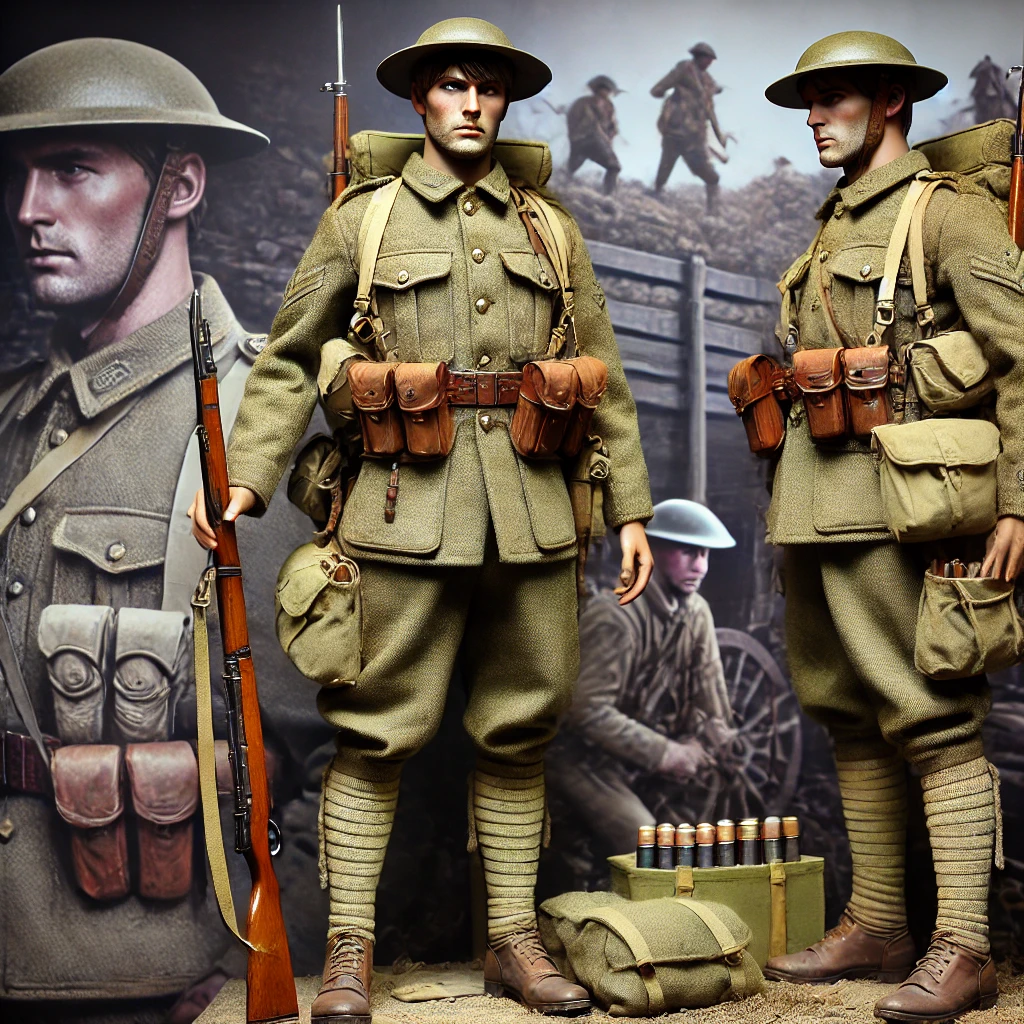
British WWI Uniform Overview: A Detailed Look at World War 1 Army Uniforms
Published on Mar 11, 2025
British WWI Uniform Overview
The British Army's uniform during World War I blended practicality and tradition. It reflected the needs of soldiers fighting in the trenches while incorporating the heritage of the British military. This article explores the various elements of the British WWI uniform, how it evolved during the war, and how it compares to other uniforms of the era, including Australian military uniforms.
1. The Evolution of the British WWI Uniform
Before World War I, British soldiers wore the traditional scarlet tunics, a design used for centuries. However, the realities of modern warfare necessitated changes in the uniform to provide better camouflage, protection, and mobility.
- Early War Uniform (1914): British troops entered the war wearing the 1902 Pattern Service Dress, made of wool in a khaki drab shade. The uniform consisted of a tunic with pleated breast pockets, trousers, and puttees (cloth wraps around the lower legs).
- Later War Adaptations (1916-1918): Due to changing battlefield conditions, uniform modifications included reinforced trench coats, Brodie helmets for head protection, and improved gas masks.
2. Key Components of the British WWI Uniform
A. Tunic and Trousers
The tunic was made of thick wool, which provided warmth but was also cumbersome in wet conditions. It had large pockets for carrying essential items such as rations and ammunition. Soldiers wore breeches or trousers, often reinforced at the knees.
B. Headgear: The Brodie Helmet
Initially, British soldiers wore a soft cap, but as trench warfare intensified, they adopted the Brodie helmet in 1916. This steel helmet provided better protection against shrapnel and became a hallmark of the British soldier's appearance.
C. Footwear: Sturdy Leather Boots and Puttees
The British Army boots were made of sturdy leather, designed to withstand harsh trench conditions. Soldiers wrapped their lower legs with puttees to protect against mud and cold.
D. Equipment and Gear
Soldiers carried essential equipment such as:
- Webbing gear to hold ammunition and supplies
- Water bottles and mess tins for sustenance
- Lee-Enfield rifles, the primary weapon for British infantry
- Haversacks for carrying personal items
3. The Significance of Camouflage in WWI
One of the biggest shifts in military uniforms during WWI was the emphasis on camouflage. The traditional bright uniforms were replaced with khaki tones to help soldiers blend into the environment. This change significantly reduced visibility in the trenches and open battlefields, enhancing survival rates.
4. Comparing British and Australian WWI Uniforms
The Australian military uniforms in WWI closely resembled those of the British Army but had distinct differences:
- Slouch Hats vs. Brodie Helmets: Australian soldiers were known for their slouch hats, which had one side pinned up, whereas British troops wore caps or helmets.
- Rising Sun Badge: The Australian uniform featured the iconic Rising Sun badge, symbolizing their military identity.
- Material Differences: Due to Australia's climate, Australian uniforms were made from lighter materials compared to the thick wool used by the British Army.
5. WWI Uniforms in Modern-Day Reenactments and Costumes
WWI uniforms are used in historical reenactments, film productions, and museum exhibits today. Many collectors and history enthusiasts seek accurate WW1 costumes to recreate the experience of British and Australian soldiers from the era.
6. Transition to WWII British Uniforms
After World War I, military uniforms continued to evolve. By World War II, British soldier uniforms had adapted to new fabrics, additional protective gear, and better camouflage techniques. The WW2 British soldier uniform was built upon the lessons learned from WWI. It was designed for greater functionality and adaptability in combat.
Conclusion
The British WWI uniform was a defining aspect of the Great War, balancing tradition with practicality. From its early khaki tunics to the introduction of steel helmets and advanced trench gear, the uniform played a crucial role in a soldier's survival. Comparing these uniforms to the Australian military uniforms and later WW2 British soldier uniforms highlights the continual evolution of military gear in response to the demands of modern warfare.
Whether you are a historian, reenactor, or simply curious about military attire, understanding the British WWI uniform provides a deeper appreciation of the sacrifices and innovations that shaped history.
